Gallery Network
A New Show in Athens, the Epicenter of the Ancient World, Explores Our Undying Love of Ruins and Fragments
We spoke with Gagosian gallery directors Louise Neri and Christina Papadopoulou, who co-organized "Ruins and Fragments".
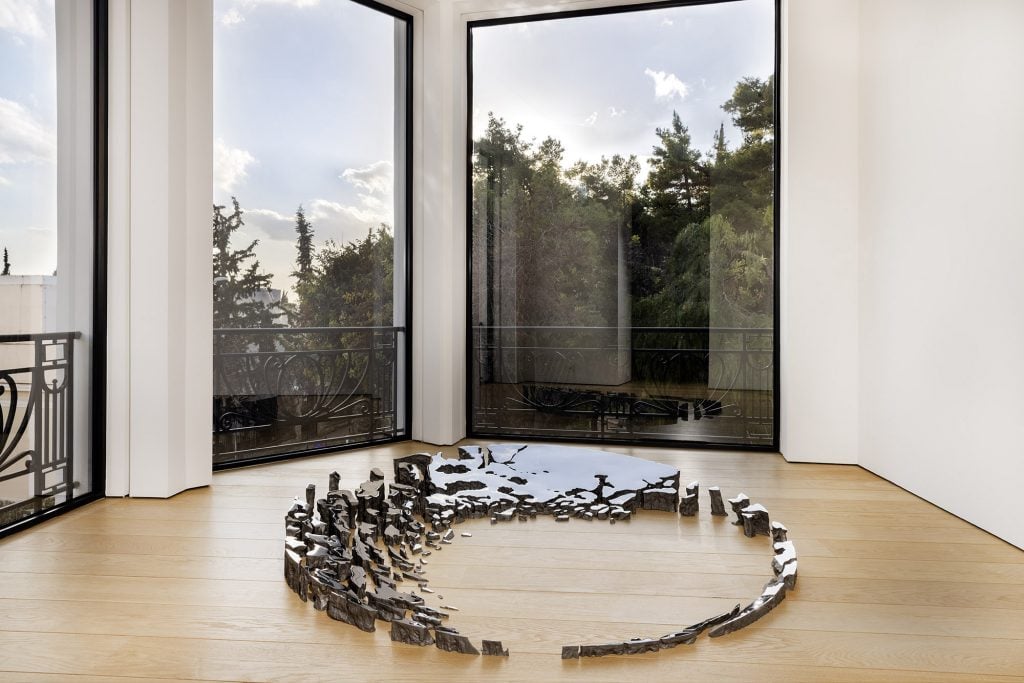
We spoke with Gagosian gallery directors Louise Neri and Christina Papadopoulou, who co-organized "Ruins and Fragments".

Katie White

Shattered walls, a toppled statue, dust on everything: ruins conjure up a beguiling mix of sensations, from the romantic and nostalgic, to mournful, and even, on occasion, peaceful or serene.
“Ruin porn” is the term often used to describe the contemporary cultural fixation with objects and places marked by the physical passage of time. But the phenomenon is anything but new. Baroque painter Nicolas Poussin romanticized ancient ruins in his canvases, while photographer Eugene Atget memorialized medieval Paris in the 1800s before the city’s Haussmannian redesign, to name just two historic examples.
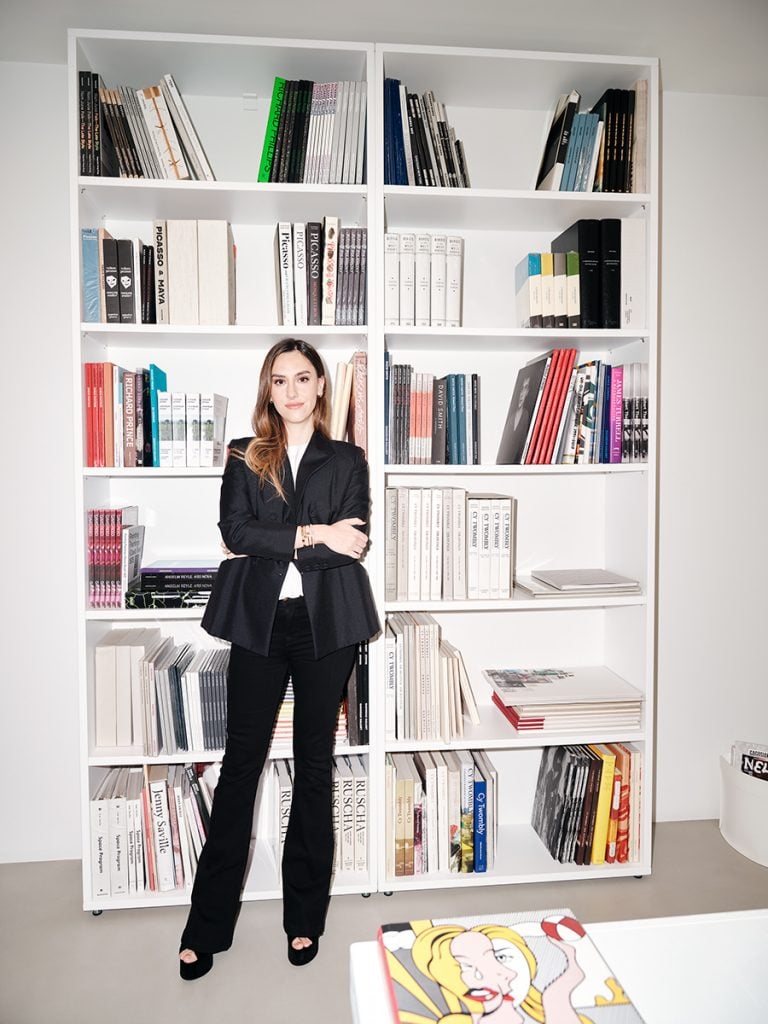
Christina Papadopoulou, director of Gagosian Athens. Photograph by Yiorgos Kaplanidis / This is Not Another Agency.
Athens is a city that exists amid its own ruins, which gives the current group exhibition at Gagosian Athens, “Ruins and Fragments”, an added layer of meaning. Organized by the gallery’s directors Louise Neri and Christina Papadopoulou, the exhibition brings together works by international, regional, and local artists reflecting on the poetic power of ruins, and how ancient histories reverberate in our contemporary lives. The interpretations are varied, from Ed Ruscha’s interest in desolate places to Rena Papaspyrou’s literal excavations of wall segments, which she recontextualizes as artworks.
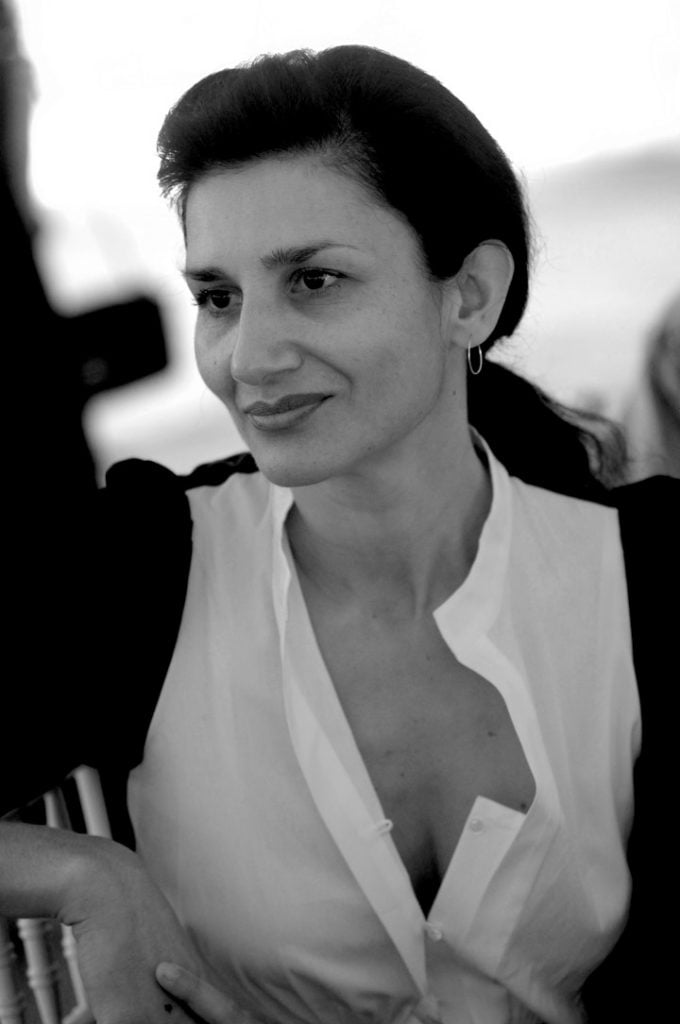
Gagosian director Louise Neri. Courtesy of Gagosian.
Papadopoulou has been a devoted supporter of exhibitions of leading international artists at museums and institutions in Greece and abroad. Neri has been a senior director at Gagosian since 2006 and has 40 years of experience organizing exhibitions. She is also an accomplished writer and editor. The two directors organized “Ruins and Fragments” together and we spoke to them about the wide-ranging exhibitions and why they think ruins keep drawing our attention.
“Ruins and Fragments” brings together works by an international cross-section of artists. What are the threads and themes running through the show?
Louise: The works in the exhibition, none of which was made expressly for it but which we gathered together, reveal diverse and distinct approaches to these ideas, using materials, motifs, and processes both ancient and modern.
Some artists have imagined entirely new futures from these fragments of the past, such as Adriana Varejão’s Cuadrato Blanco (White Square) (2020), where Indigenous Mexican, Spanish colonial, and international modern traditions intersect; or Sarah Sze’s Wider Than the Sky (2021), with its eroded parabolic structure made up of many mirror-polished cast steel elements that absorb and refract the surrounding environment; and Cristina Iglesias’s haunting mental architectures silkscreened onto gleaming copper panels, both of which embody Robert Smithson’s concept of “ruins in reverse.”
A rather more extreme example is Katharina Grosse’s cast aluminum form with its radioactive color palette, which suggests a technological shard sent back to the present from some future civilization.
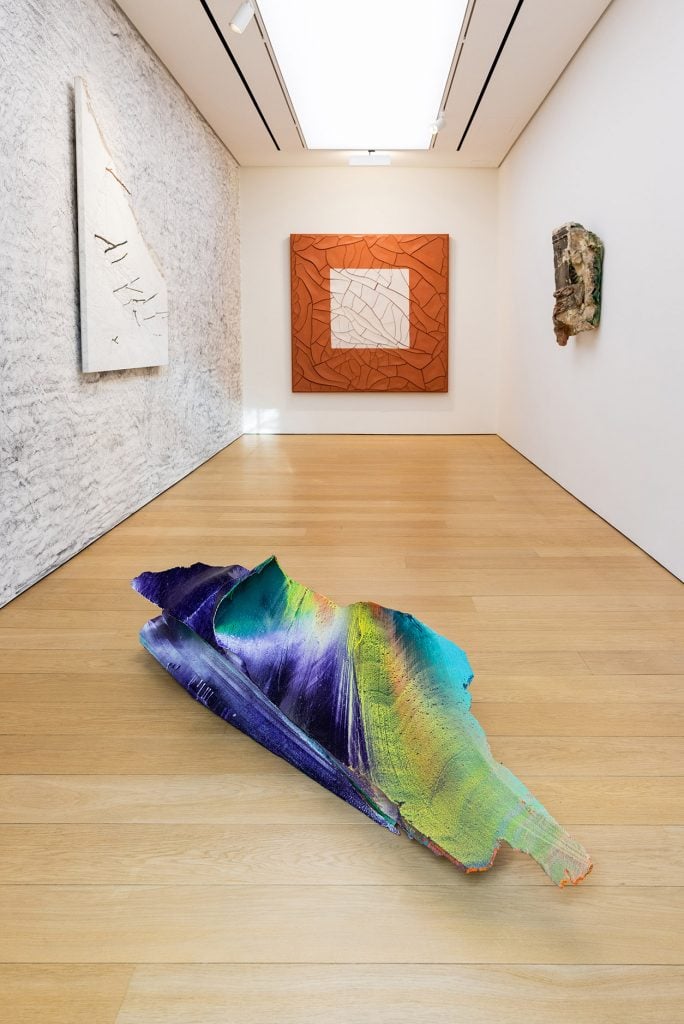
Installation view “Ruins and Fragments,” 2022. Courtesy of Gagosian. Photograph by Paris Tavitian.
The show is presented in Athens, a city deeply rooted in antiquity and filled with reminders of our ancient cultures and past civilizations. In what ways does the exhibition communicate with the city?
Christina: Some of the works that are included in the exhibition incorporate the real, embedded materials of Greek urban history and culture. As such, they communicate with the city of Athens in either direct or indirect ways. For instance, there are artists working with archeological processes such as Johanna Hadjithomas and Khalil Joreige. Their piece, Unconformities: Time Capsules of the site: Monesteraki (Athens), From 0 to 150 cm, From 150 cm to 300 cm, From 300 cm to 450 cm, From 450 cm to 600 cm (2017), consists of actual fragments taken from archeological excavations in Monastiraki, Athens.
Preserved in resin, these fragments record decades passing, history happening, “a missing interval in the geologic record of time”. It is shown along with the accompanying Trilogies, which are photographic, graphic, and written accounts of these excavations by the artists and other experts.
Or Rena Papaspyrou’s experiments from the 1980s, whereby she took the distressed surface layer of wall segments from derelict buildings in the Athens city center and then modified them with pencil and marker, resulting in artworks that possess the visual complexity of maps or abstract paintings.
More indirectly, there is Corpo di pietra—rami (Body of Stones—Branches) (2016) by Giuseppe Penone, in which bronze twigs extend from a veined whitestone fragment, highlighting the use of marble, a ubiquitous material in the Greek landscape as well as in ancient Greek art and architecture, when it was mostly used to honor the gods and celebrate beauty.
Are there any works in the exhibition that you are particularly drawn to or that you feel really pull together the exhibition?
Christina: When the show started coming together, Louise and I felt that every single work on the list was essential and that the show would be incomplete if one of the pieces was missing. If I had to name a couple of works that really speak to me, I would have to mention Ed Ruscha’s Metro Mattress (2015) paintings, which have a strong material presence, as if they are carrying the full weight of physical human existence.
These are installed with Where am I now? (2019), the work of Maria Loizidou, a Cypriot artist. In this striking piece, made using ancient local weaving techniques, Loizidou creates a delicate, weblike mesh from stainless-steel, evoking a sense of spiritual ascension. I love how the works by those two artists are juxtaposed and participate in an unexpected yet highly constructive dialogue with each other.
Then there is Mauvaises Herbes (2020) by Christodoulos Panayiotou—a natural stone mosaic picture that was created following the artist’s extensive research on and engagement with excavated mosaics and their environment. This piece is shown in the same room as Sarah Sze’s Wider Than the Sky (Fallen Sky Series) (2021), a work that is made to reflect the sky, nature, and environment around it.
The gallery room that was selected for these works is in a corner filled with natural light, which effectively underlines the ways in which these works embody the intimate relationship between humankind and its immediate landscape.
Also, the first work one encounters when entering the gallery is a beautiful sculpture by Tatiana Trouvé, titled Antonio. It is a bronze cast of a net shopping bag, which contains a marble cast of Antonio Damasio’s book The Strange Order of Things, and a wooden sculpture, which has been carved by Tatiana’s father.
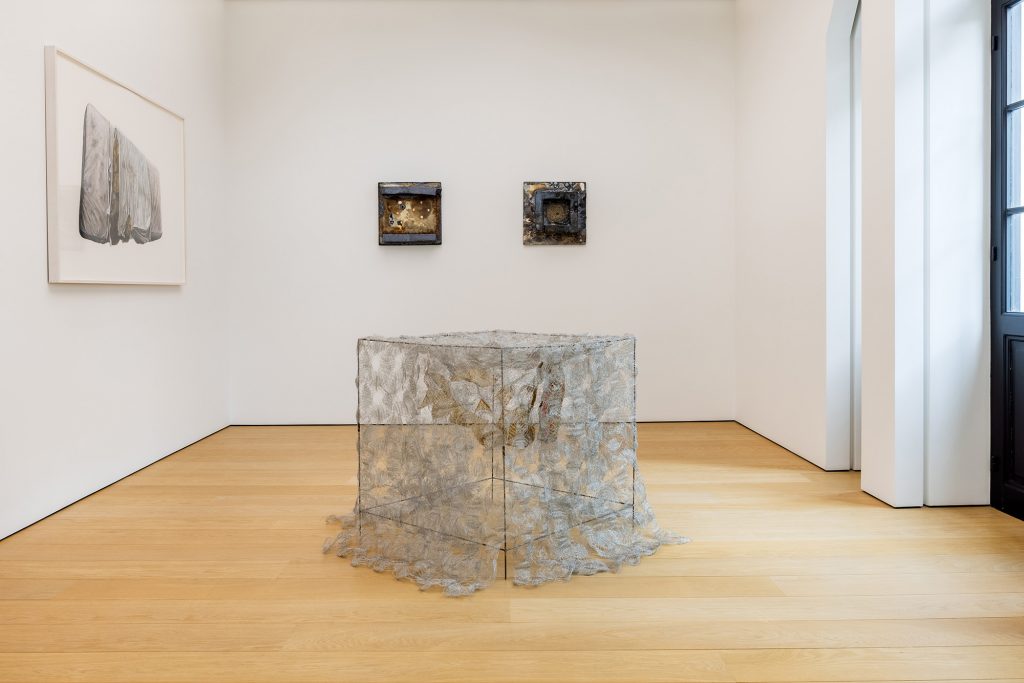
Installation view “Ruins and Fragments,” 2022. Courtesy of Gagosian. Photograph by Paris Tavitian.
The press release for the exhibition contains two quotations: “I went in search of myself,” by the ancient Greek philosopher Heraclitus, and “We might be at the end of our Rome,” by American artist Ed Ruscha. How do these two statements embody the ideas at work in the exhibition?
Louise: The quote from Heraclitus—the influential Greek philosopher whose thoughts exist today only in fragmentary form—encapsulates the perpetually unfinished human project of the search for selfhood and self-knowledge, as suggested in Douglas Gordon’s fractured statue of Scottish poet Robert Burns. While Ruscha’s wry comment on society’s continuing downward spiral echoes Mahatma Gandhi, who famously responded when asked about Western civilization, “It would be a good idea.”
The last few years and weeks have revealed deep cracks in our global society. Do you think the artists in the show are considering the end of eras, good and bad, in our contemporary moment?
Louise: The cracks have been there all along, for days and weeks and months and years and centuries; we just chose to ignore them until they can’t be denied any longer. All of the artists involved feel and reflect and actively engage in these issues—the grave challenges to democracy and social justice, the assaults on felt and lived experience, and our planet in toxic and seismic turmoil. And they respond with their critical yet ultimately redemptive powers of cultural production. Ed Ruscha is perhaps the most literal, with his statement “We might be at the end of our Rome” and the exquisite dereliction of his Metro Mattresses, like decaying bodies; or the metaphorical import of Theaster Gates’s ceramic sculptures, pushed to collapse by the excessive heat of the firing kiln.
Christina: The way I see it, there is a strong element of timelessness as the core essence of this show. Every end is a new beginning. There is also this notion of continuity, with the ruins being linked to the past, while also revealing the possibilities of the future and of what would be. In this way, the works by the participating artists highlight the notion of the timelessness of human creativity, culture, and even existence as a whole.
How do geographic locations and artistic generations influence or inform the works in the show?
Christina: “Ruins and Fragments” foregrounds artists from two generations, working locally, regionally, and internationally in a plethora of different mediums—sculpture, drawing, ceramic, printmaking, painting, assemblage, and installation—and whose artistic influences stem from their diverse cultural backgrounds, which reach from Greece around the world.
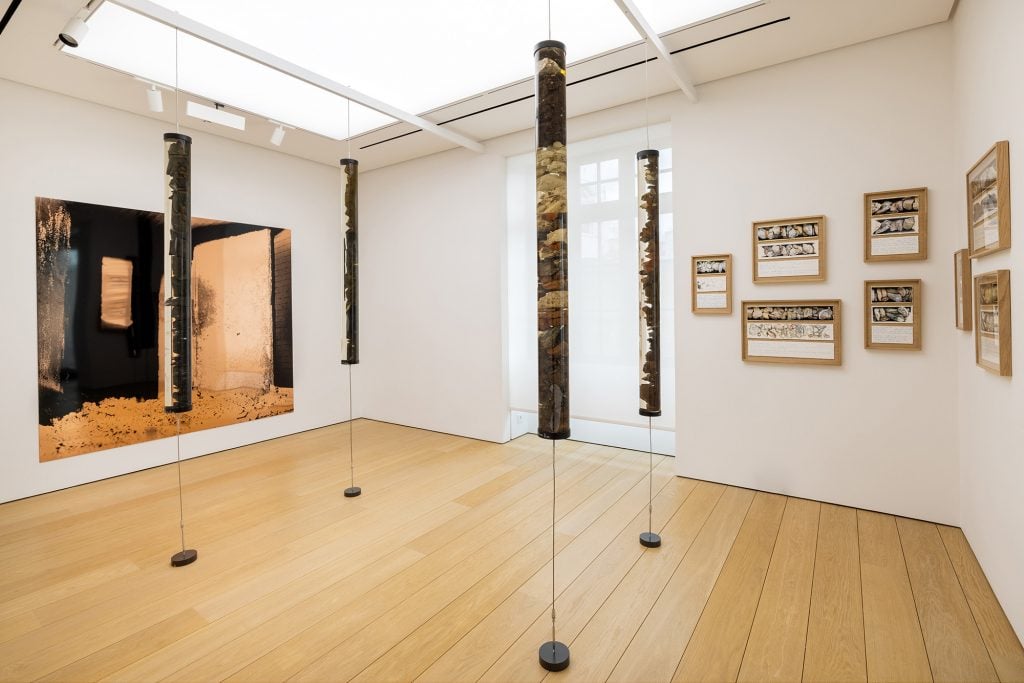
Installation view “Ruins and Fragments,” 2022. Courtesy of Gagosian. Photograph by Paris Tavitian.
Why do you think that people are so fascinated by ruins and fragments? I once read that ruins allow people to imagine a story of the past and what can be. Both for nostalgia’s sale, or what might have been, and as a way of constructing a new future built on the past.
Louise: Ruins—architectural, sculptural, material—stimulate the human mind in its constant quest for certainty and completeness; to imagine what might have been, or could be. Just two days ago in Rome, I visited the Terme di Caracalla, an ancient site that had been a popular leisure center with swimming pools and gymnasiums. But, it was so utterly magnificent in its aesthetic austerity and skeletal magnitude that it was hard for me to imagine preferring its former glory, covered in ornate marble and figurative frescoes!
In the same way, most Greek philosophical texts as we know them today survive only as “fragments”—the collective term given to quotations preserved in later writings. Although these texts may constitute a small proportion of the originals, their power lies in their capacity to illustrate the more striking or novel aspects of their authors’ thoughts and thus afford the reader space for more expansive imaginings and fictions.
“Ruins and Fragments” is currently on view at Gagosian Athens.